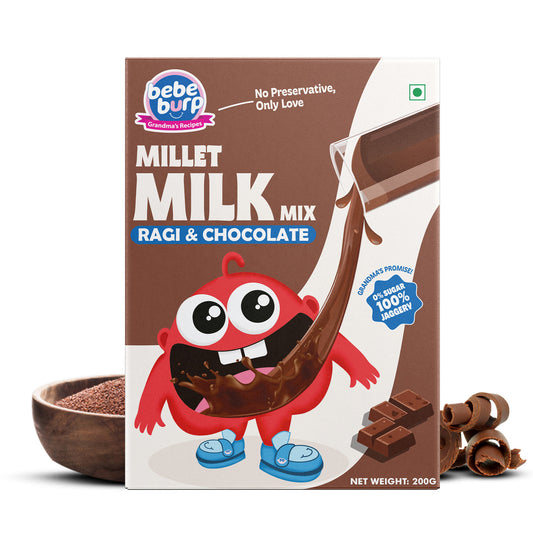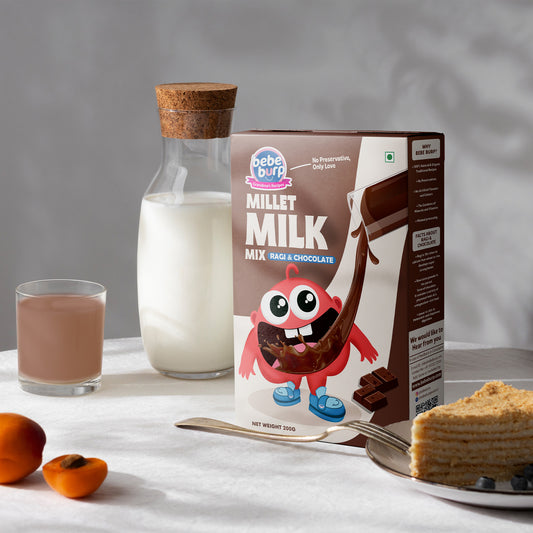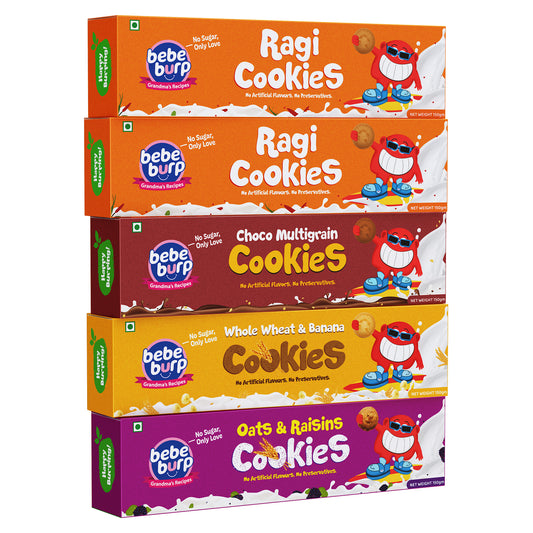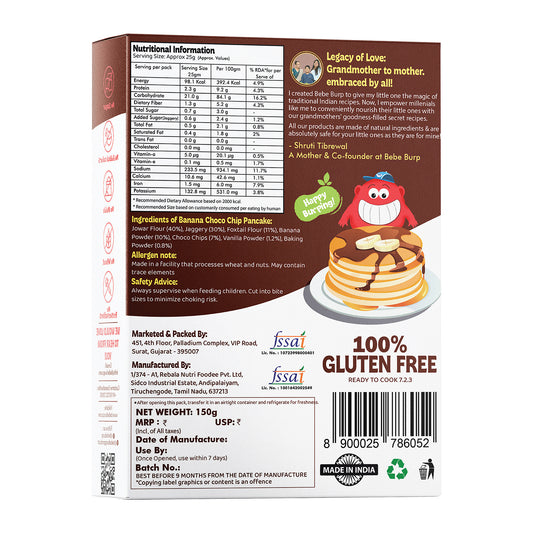Pearl millet (also called bajra) is one of the healthiest and environmentally friendly grains that can be included in the diet of the family.
Pearl millet is fortified with iron, protein, fibre, and vital minerals and has been winning the favour of more health conscious parents as a healthier meal alternative to feed their children.
You will get to know all about pearl millet in this complete guide: its nutrition, its benefits, how to cook it, how to use it with babies, delicious recipes, and safety measures, all presented in a parent-friendly and easy to understand manner.
What Is Pearl Millet?
Pearl millet (Pennisetum glaucum) is an ancient grain traditionally grown in India and Africa.
In India, it is widely known as bajra, commonly used to make rotis, porridges, khichdi, and even infant cereals.
It is naturally:
- Gluten-free
- High in iron & calcium
- Delicious vegetarian protein.
- Easy to digest (when cooked well)
Due to its high level of nutrition, pearl millet is regarded as one of the finest grains to be taken by the growing children.
Pearl Millet Nutrition (Per 100g Cooked)
The nutrient density that is common in pearl millet has seen it being highly recommended by nutritionists, pediatricians and dieticians.
|
Nutrient |
Amount |
|
Energy |
378 kcal |
|
Protein |
11 g |
|
Carbohydrates |
67 g |
|
Dietary Fibre |
8 g |
|
Iron |
8 mg |
|
Calcium |
42 mg |
|
Magnesium |
137 mg |
|
Potassium |
307 mg |
Health Benefits of Pearl Millet
1. Rich in Iron (Helps Prevent Anemia)
Pearl millet is among the most ideal sources of iron in plant foods and it is therefore recommended to children, females, and individuals with low hemoglobin.
2. High Fibre: Supports Digestion
The fibre in bajra helps:
- Prevent constipation
- Improve gut health
- Keep kids full for longer
3. Great for Bone Development
It has calcium plus phosphorus which helps in growing of bones in toddlers and kids.
4. Supports Healthy Weight Gain
Pearl millet contains high levels of calories and nutritional value → ideal towards babies and towards toddlers who are in need of nourishment.
5. Naturally Gluten-Free
Safe for people with gluten intolerance or wheat allergies.
6. Balances Energy Levels
The complicated carbs give a slow release of energy and hence is suitable in school-going children and active toddlers.
Is Pearl Millet Good for Babies?
Pearl millet can be given to babies aged 6 months and above as follows:
- Thin porridge
- Bajra cereal
- Khichdi
- Soft pancakes
Benefits for Babies
- Easy to digest when cooked well
- Helps with weight gain
- Provides iron for brain development
- Keeps the baby full
Pro Tip: One should always begin with 1-2 tsp and go step by step. Bajra when used with younger infants should be avoided at night because it can be heavy.
How to Use Pearl Millet for Kids (Age-wise Guide)
6–8 Months
- Pearl millet porridge
- Bajra khichdi
- Bajra banana paste
9–12 Months
- Soft bajra dosa
- Bajra vegetable porridge
- Bajra idli
1–3 Years
- Bajra roti + ghee
- Bajra ladoo
- Mini bajra pancakes
- Bajra upma
4+ Years
- Pearl millet tikki
- Bajra cookies
- Bajra vegetable uthappam
- Bajra roti wraps
Top 5 Easy Pearl Millet Recipes for Babies & Kids
1. Pearl Millet (Bajra) Porridge – 6 Months+
Ingredients:
- 2 tbsp bajra flour
- 1 cup water
- Ghee (optional)
How to Make:
Cook bajra flour with water until smooth and thick. Add a little ghee for flavor.
2. Bajra Khichdi – 7 Months+
Ingredients:
- 2 tbsp pearl millet
- 1 tbsp moong dal
- Vegetables (optional)
How to Make:
Pressure cook all ingredients until soft and mash.
3. Bajra Roti with Ghee – 1 Year+
Soft, nutritious, and filling—perfect for lunch.
4. Bajra Vegetable Pancakes – 1 Year+
Prepared with bajra flour + vegetables+ curd - crispy and nutritious.
5. Bajra Ladoo – 1.5 Years+
Bajra flour + jaggery + ghee + a fantastic source of energy to the children.
How to Cook Pearl Millet Properly
To make bajra soft and easily digestible:
- Allow to soak at 3 to 6 hours and make it less heavy.
- When softening, cook on low flame.
- Put in ghee to enhance digestion and absorption.
- Do not spend much on big babies at night.
Possible Side Effects
Pearl millet is not by and large harmful although:
- May result in the cases of gas in some babies which is not cooked well.
- It is advisable not to feed babies at night.
- It should be introduced gradually and monitored with digestion problems.
Pearl Millet vs Other Millets (Quick Comparison)
|
Millet |
Best For |
Key Benefit |
|
Pearl Millet (Bajra) |
Babies, toddlers |
High iron, good for weight gain |
|
Ragi |
6 months+ |
Extremely high calcium |
|
Foxtail Millet |
Kids 1+ |
Good for digestion |
|
Little Millet |
All ages |
Low glycemic index |
FAQs About Pearl Millet
1. Can I give bajra daily?
Yea, but turn other grains so that you can have a well-balanced meal.
2. Is bajra heavy for babies?
Only if not soaked or overfed. Bajra that is cooked well is easy to digest.
3. Does pearl millet cause gas?
Sometimes. Begin with little amounts and watch.
4. Can kids eat bajra in summer?
Yes! Serve with curd or buttermilk to counter heat.
Final Thoughts
One of the most nutritious grains that you can incorporate in the diet of your baby and child is pearl millet (bajra).
It is a smart choice because it is a rich source of iron, fibre, protein and minerals that will keep you growing, immunize and provide you with energy.









